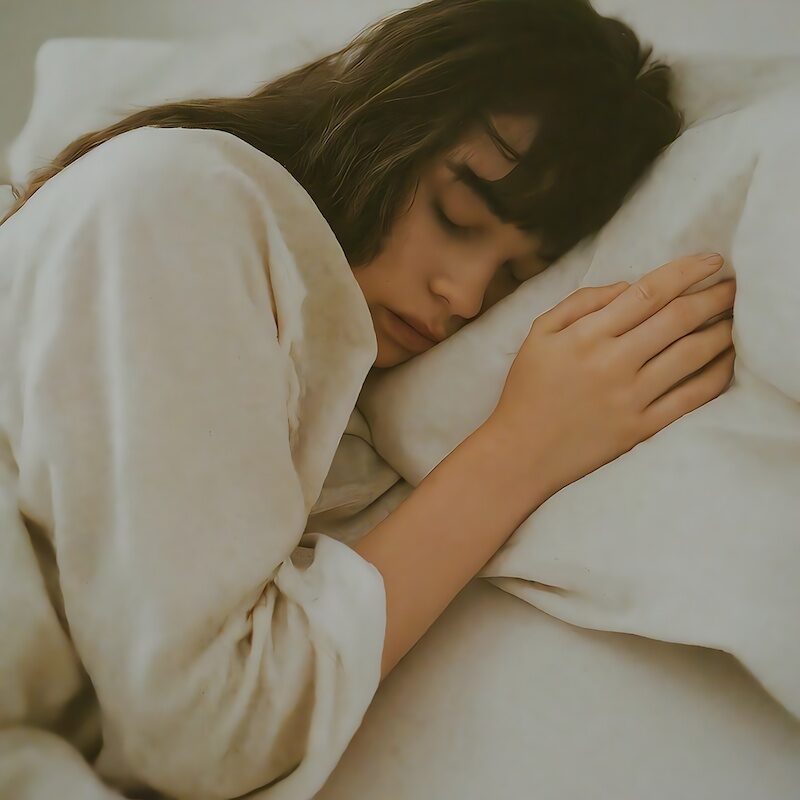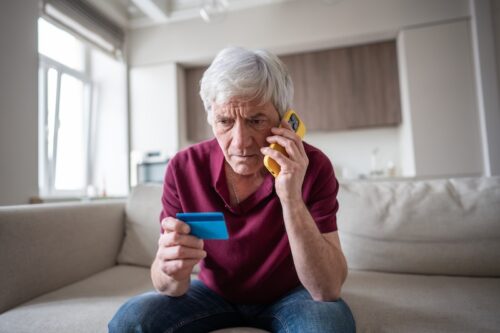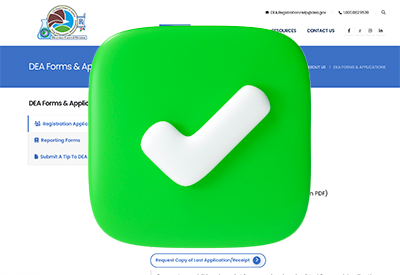Here's a Throwback Thursday episode originally cast in March of 2021, where we're going to look at the question of whether adding a z hypnotic improves antidepressant response. And stay tuned to the very end where I'm going to update it with new research. We all know that when you sleep better, you feel better.
Publication Date: 02/22/2024
Duration: 26 minutes, 57 seconds
Transcript:
Kellie Newsome: We all know that when you sleep better you feel better, so it shouldn’t come as a surprise that a sleep medicine like eszopiclone helps depression and anxiety. But do they all help, or is it just eszopiclone? And is it possible this hypnotic has direct antidepressant and anxiolytic effects?Dr. Aiken: Welcome to the Carlat Psychiatry Podcast, keeping psychiatry honest since 2003. I’m Chris Aiken, the editor in chief of the Carlat Report.
Kellie Newsome: And I’m Kellie Newsome, a psychiatric NP and a dedicated reader of every issue.
Dr. Aiken: Some men, no doubt, will, before sleep, considerOne thought: I am alone. But some,In the mercy of God, or booze, do notLong stare at the dark ceiling.
Kellie Newsome: That’s the last stanza of a poem by Robert Penn Warren, and it tells us something about what it’s like to be depressed and unable to sleep. When the lights are down, the ceiling is dark, there is nothing to distract from the ruminative thoughts that make depression so painful. Last month we covered the long and complicated relationship of benzodiazepines and depression that culminated in over a dozen controlled trials where the benzos – in particular alprazolam (Xanax) – did a pretty good job of relieving depression, even when compared head-to-head against a tricyclic antidepressant.Today we’re going to talk about the successor to the benzos – the z-hypnotics – and whether they can augment antidepressants in depression and anxiety disorders. They are called the z-hypnotics because all of them start with the letter z:
- Zopiclone (Imovane), which is not available in the US but has been used in Europe since 1986
- Zolpidem (Ambien), released in 1992
- Zaleplon (Sonata), released in 1999
- And eszopiclone (Lunesta), released in 2004 in the US
Dr. Aiken: Eszoplicone is not widely available outside the US, but for our international listeners it’s pretty similar to the original z-hypnotic zopiclone. Zopiclone is composed of two mirror image stereo-isomers – the L and S zopliclones – in a 50/50 mixture, so the typical dose of zopiclone – 7.5 mg – contains 3.25 mg of eszopiclone, which is just about the same as the max dose of 3mg. We know of only one clinical studythat compared these two -clone hypnotics. It was a randomized trial that compared those two dosages of the drugs in 199 patients – and it found they were virtually identical in their clinical and adverse effects, which included polysomnography data. However, there are a few non-clinical studies in healthy volunteers, and they found that eszopiclone works faster and does not linger as long as zopiclone, which would suggest the s- isomer is a little more favorable.Kellie Newsome: You have to wonder – why would anyone fund a head-to-head study of two similar drugs that are both generic and not even available in the same country? This study was funded by Eurofarma, who recently launched eszopiclone in Brazil. Brazil is the only country we know of where both eszopiclone and zopiclone are available – and Eurofarma wanted to reassure Brazilian physicians that the new version was at least non-inferior.Dr. Aiken: OK so now that we’ve clarified that these two drugs are similar, let’s look at how the zopiclones might differ from the other z-hypnotics. Although they all start with the letter z, or es-z, these medications have different chemical structures – enough that each is in its own class.
- Zolpidem (Ambien) is an imidazopyridine
- Zaleplon (Sonata) is a pyrazolopyrimidines
- And the zopiclones are cyclopyrrolones
Kellie Newsome: So was it something about zopiclone, or was it just that anything that improves sleep will improve depression. After all, we’ve since learned that a behavior therapy for insomnia – CBT-I – treats depression augments antidepressants. And keep in mind, the patients in that study had insomnia AND depression.
Dr. Aiken: The next study came out in 2010, and it was led by Vaughn McCall who also contributed to the Fava study. We interviewed Vaughn on the podcast last year, where he talked with us about the psychology of insomnia. These patients are keyed up, on edge, anxiously waiting for sleep to come, long staring at the dark ceiling as Robert Penn Warren put it. Lack of sleep causes anxiety, and anxiety causes lack of sleep. Vaughn understands this vicious cycle and wanted to see if eszopiclone would help not just depression but quality of life in depressed patients with insomnia. So he randomized 60 of them to either placebo or the hypnotic, again augmenting a new trial of fluoxetine. Quality of life no doubt improved, as did depression.
Kellie Newsome: So far eszopiclone is 2 for 2 in depression, but there were two other industry-sponsored studies that did not get published. We were able to dig up the results of one of them, and it was negative, despite having a similar design to the others – eszopiclone helped sleep but not depression. The final studywas a smaller one in elderly patients with depression and insomnia, and we reached out to the lead investigator but did not hear back.
Dr. Aiken: But most of the therapies we use have negative studies, and studies fail for all kinds of reasons. The only other z-hypnotic with similar studies in depression is zolpidem – Amien. It has about the same number of studies, including one by Dr. Fava, but zolpidem did not turn out as well – generally it helped sleep, but not depression. So is there something unique about zopiclone that gives it this antidepressant boast? That’s what Andy Krystal came to believe. Dr. Krystal was one of the investigators in many of these studies, and here’s what he wrote about them:
Kellie Newsome: There is some evidence that the insomnia therapy eszopiclone may have direct antidepressant and anxiolytic effects. Studies were carried out evaluating the effects of eszopiclone therapy vs. placebo as co-therapy with open-label SSRI treatment in patients with insomnia co-morbid with major depression and generalized anxiety disorder. Eszopiclone not only significantly improved sleep compared with placebo but it also had a significant advantage over placebo on the associated depression and anxiety outcomes both with and without the sleep items included in the scales used. The initial interpretation of these findings was that eszopiclone improved sleep compared with placebo and that the sleep improvement mediated improvement in depression and anxiety. However, there is evidence that this is not the case. The identical studies were repeated with the insomnia agent zolpidem modified-release and comparable improvement in sleep vs. placebo was observed but without an accompanying effect on depression or generalized anxiety symptoms [108, 109]. The most parsimonious explanation for this set of findings is that eszopiclone has direct anxiolytic and antidepressant effects not mediated through effects on sleep and zolpidem modified-release does not.
Dr. Aiken: As he describes, zopiclone was also tested in a large trial for generalized anxiety disorder, and it worked, while its neighbor zolpidem (Ambien) did not in a similar study. This was a very large study – 600 patients – and it compared zopiclone to placebo as augmentation for escitalopram in generalized anxiety disorder, and Dr. Krystal was one of the authors. There are also small studies of eszopiclone in PTSD – one of which we reported on the Carlat Report last month – and there the results are not as strong.
Kellie Newsome: And in 2014 Dr. Krystal published a controlled trial of eszopiclone for lower back pain, along with Harry Goforth and Xavier Preud’homme. And it worked – the patients on eszopiclone had less pain and less depression. The more their sleep improved, the more than pain went down, suggesting that it was the benefit was related to sleep rather than a direct effect of eszopiclone.
Dr. Aiken: Unfortunately, we don’t have a firm conclusion to this story. Eszopiclone is now generic and there doesn’t seem to be any more research funding to figure out if it has direct antidepressant or anxiolytic effects. But we have enough data here to suggest it might, and it’s worth keeping an eye out for this in your patients. But there’s also data pointing the other way. Daniel Kripke analyzed the major trials of the z-hypnotics in primary insomnia, and he found that the patients were more likely to develop depression on the hypnotic than the placebo. This was a secondary analysis, and the difference was small: 1 % vs 2 %, but it’s a warning worth considering. We saw the same paradox with the benzodiazepines. Those medications can cause depression, particularly with long-term use, but they also treated depression in the short term trials. Sound familiar? Sounds a bit like eszopiclone. If it acted just like a benzo in mice, why wouldn’t it do the same in humans?
Kellie Newsome: So it may not be that anything that improves sleep will also improve depression. That could be part of the mechanism here, but there could be some anxiolysis going on that is helping eszopiclone cut through the depression. And it may not even be eszopiclone that’s doing it. Eszopiclone has an active metabolite – desmethylzopiclone – which has antianxiety effects. This metabolite seems to reduce anxiety without causing sedation, which is a good thing because it lingers around in the body with its 7-10 hour half-life. The company that made eszopiclone – Sepracor – put a patent on this metabolite 20 years ago, hoping to develop it for anxiety and possibly depression. Whatever research came of those efforts, however, seems to have vanished without a trace.
Dr. Aiken: What’s the take home here? We hope you’ve learned that the z-hypnotics are not interchangeable, and one of them – zopiclone - acts more like the benzos at both the cellular and the clinical level, though it’s not as likely to cause tolerance or addiction as the benzos are. But this is a complicated subject, and one that’s part of a larger history of attempts to treat depression with GABAergic medications, from barbiturates to benzos to zopiclone. Check out part one of this episode from April 5 to learn more on that. And most importantly, remember that all of these are short term studies – the benzos and the z-hypnotics. No one is suggesting we use them long term, and such chronic use may even cause depression. In fact, in one of eszopiclone’s depression studies the researchers did a blind withdrawal of the hypnotic at the end of the trial – randomizing patients to replace their hypnotic with a placebo or keep it going. And they did just as well coming off it. In practice, however, that’s not so easy to do, because you can’t replace your patients sleep med with a placebo, and placebos do have a big effect on sleep. But you can set expectations at the start. If your patient has significant insomnia along with their depression or anxiety, a short course of a hypnotic may be in order. But combine it with good sleep hygiene, and tell your patient that the sleep medicine will help them reset their sleep rhythm and is not meant for long term use. As they get into the habit of better sleep, they’ll be able to build up a behavioral routine that’s more conducive to sleep, and that is what will keep them going in the years to come.And now for the word of the day…. Present moment awareness
Kellie Newsome: Present moment awareness is an element of mindfulness. It involves monitoring and attending to your current experience rather than anticipating or worrying about the future or dwelling on the past. The idea is captured in the title of Jon Kabat-Zinn’s 1994 bestseller, Wherever You Go, There You Are, or in a lot of cliché’s like “Be here now” and “Seizure the day.” In next week’s podcast we’ll detail the treatments that work best after a patient fails two antidepressant trials. On that list you’ll see some unique medications like minocycline that few of us are using, but you’ll also see psychotherapy, particularly mindfulness based therapy and psychoanalysis. That’s right, psychoanalysis worked for treatment resistant depression – and we got the manual here for the particular form of psychoanalysis – the Tavistock method – and I’m going to read it to you right now. Here’s what it says the analyst provides to the patient: The analyst is receptive and open, makes emotional contact, and attends to the here and now.People with depression have a hard time being in the here and now. Their inner experience is often painful, and they are driven to avoid it. They are disconnected from the outer world as well. Psychologist James McCullough describes patients with chronic depression as though they are encased behind a wall of concrete. It’s not easy to sit with that kind of pain, or to reach behind those walls, but the next time you see someone with depression, try to bring a dose of Present moment awareness into the room. And don’t forget to follow us on Twitter for daily research updates. Today, we’ll tweet on a new study from the New England Journal of Medicine that tested psilocybin in major depression. Earn your CME credits at thecarletreport.com...
Dr. Aiken: So what's new in the past three years since that podcast came out? We don't have much to report on the Z Hypnotics. But, I do want to quelch a rumor about their alternative, the orexin antagonist. Seems there was this rumor for a long time that the orexin antagonist might help depression. So far, I have seen no studies showing that, nothing's come out, and instead, all of these orexin antagonists, like suvarexant, lemurexant, dorexant, they all have warnings and a few case reports of worsened depression or suicidality on them. So, we await further information to see if those might also help depression by treating sleep. We just don't know. But we do have a new study, which has changed my thinking about the risks of long term benzodiazepines versus the risks of tapering them off. Now, there's been a movement to taper people off of benzodiazepines, particularly the elderly or those on opioids. And this new study compared real world outcomes. In those who were tapered off by their doctors versus those who were not. In a huge sample, 350, 000 patients, the researchers were expecting to see better health outcomes in those who were taken off the benzodiazepine. But what they found was the opposite. Mortality rates, including overdoses, were a little bit higher in those who were tapered off. in this VA study. The study, although very large, was not randomized, so there's always the possibility that doctors were simply tapering off benzos in higher risk patients to begin with, and outcomes do tend to be worse in higher risk patients. Of course, they tried to control for all these confounders, but they can't do that completely. The authors did suspect that what might be going on is that as people were getting off the benzodiazepines, they started turning to alternative sources, the streets, to get similar medications, which then raised their overdose risk. A real good question about this study is, what about those patients on opioids? And fortunately, the authors did parse them out, and to our surprise, they found the same finding that even in the group who were on opioids, the mortality risk was greater with tapering off the benzodiazepine versus staying on it. So this study gives me a little pause about taking people off benzodiazepines, or at least teaches me to respect that the benzodiazepine withdrawal state can be a very psychologically painful one with risks of its own. We saw similar findings again from VA studies mostly with tapering off opioids, which seemed like a really well intentioned effort by the VA, but in some of those studies, they found worse outcomes in those who were tapered off them, such as higher risks of suicide attempts and psychiatric hospitalizations. So we got to respect that withdrawal state for both of these medications. Thank you to Donovan Mauston colleagues from the University of Michigan, Ann Arbor VA. who brought us this wonderful new study in JAMA Network Open, December, 2023. For more studies like this, follow me on the Daily Psych feed on Twitter, LinkedIn, Facebook, or that new one threads, Chris Aiken, MD. The Carlat Report is one of few CME publications that depends entirely on subscribers. Thank you for helping us stay free of commercial support.
__________
The Carlat CME Institute is accredited by the ACCME to provide continuing medical education for physicians. Carlat CME Institute maintains responsibility for this program and its content. Carlat CME Institute designates this enduring material educational activity for a maximum of one quarter (.25) AMA PRA Category 1 CreditsTM. Physicians or psychologists should claim credit commensurate only with the extent of their participation in the activity.


_-The-Breakthrough-Antipsychotic-That-Could-Change-Everything.jpg?1729528747)



